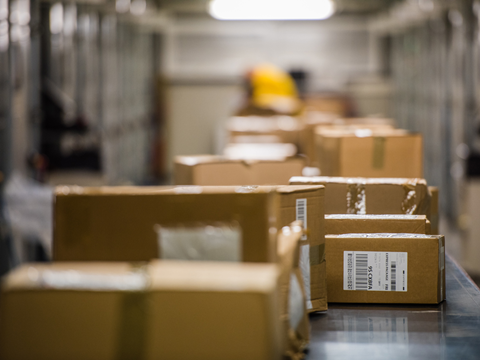
Sustainability is a critical topic and a key priority for everyone, but how much difference can small changes to packaging design make? Gavin Mounce, e-commerce design manager at DS Smith, has been leading an interactive workshop during the Deliver 5 event, held on 9th October. In this article, he shares the focus of his workshop with a wider audience – about how millimetres make a difference.
Fixing a problem at source has always been the best approach, and designers can have an even greater impact on the overall sustainability of a product by designing out waste at the start. These small changes can affect many areas: from energy and raw material usage, to waste and CO2 emissions. Furthermore, they may not just have an impact on the environment now, but could have a long-lasting effect for many years.
Designing packaging for a changing world means we need to do more than be creative designers. It is no longer acceptable for the design to only be a good solution that fulfils the customer brief, it also needs to be an end-to-end, supply chain-efficient solution.
Materials
From the very first thought about your design, understanding the life cycle is critical in terms of choosing the right material and ensuring no more is used than is required. I was once asked to investigate a complaint from a customer that was supplying a twin pack of hand soap refills through e-commerce that sometimes leaked.
By understanding the supply chain, I not only removed the complaint about leakage but also reduced the volumetric shipping size by 40% and material usage by over 50%. Complaints don’t always have to result in hardship, and certainly aren’t solved by adding more material.
Manufacturing
Understanding your internal supply cycle means that the design is efficient on every machine for optimum run speed and minimal waste, and it lets you choose the right design style to increase production sustainability.
In one of our tests of two popular e-commerce designs, waste was reduced from 26% to 9% and ran 19% faster in die-cutting. Furthermore, we reduced the blank size and provided a 50% increase in performance during supply cycle testing. This highlights that sustainability does not have to increase costs or reduce performance.
Design
Attention to detail when developing your design can provide additional performance, all of which help to improve sustainability. At DS Smith, we have developed a set of Circular Design Principles, aimed at designing out waste and pollution, keeping products and material in use, and regenerating natural systems.
After previous local optimisation, a customer with sites in the UK and Germany was unaware that there was a 24% difference in the performance of their machine erect trays due to the flute direction. I have even seen compression performance improved by 20% on an e-commerce flower case through the use of an offset slot by 3mm.
Transit and storage
While analysing a global supply chain for a confectionary brand, I found that removing 3mm off the length and width of a case increased the pallet optimisation by 13.3%. This equates to reduced costs in transportation, fewer pallet movements internally, and reduced storage and CO2 emissions.
How many times have you challenged a customer or design brief on the sizes provided? Removing a few millimetres from a case size is not radical and has been carried out for many years, however, pallet optimisation is not always a clear indication of true performance, and there are other methods that can bring even greater efficiencies in the supply chain.
Using this alternative methodology increased supply chain optimisation by an average of 10% across 60 different product lines, some of which had already been audited locally.
Packing
During an e-commerce customer audit, I noticed a packer upsizing a box when there was a specific pack designed for the product. When questioned, they explained that they felt it packed quicker and the smaller one seemed too tight. Approximately every ten minutes a pack was upsized, which may not seem significant, but it resulted in a 20% rise in pack price along with an increased risk of damage.
Multiply this by thirty pack benches over five days and two shifts, resulting in many thousands of pounds or euros lost every year. What link does this have with a designer? Have you checked if your design is intuitive, easy to pack, or that it provides packing instruction videos or training for the customer? All of these and more can lead to a reduction in waste, CO2 and improved sustainability.
Take Five
Take Five means taking five extra minutes for an end-to-end review of these five key areas, especially if you were not directly involved in the project brief with the customer. This methodology can be applied to all enquiries, no matter how large or small, and best practice should always be applied.
The more you use it, not only does it become quicker, but it will become a way of life. Our design decisions are far more wide-reaching than we can ever imagine, one small change on the CAD screen can have a significant effect in the supply chain.
Next time you create a pack design, instead of thinking big, maybe it’s time to start thinking small and seeing where you can lose a millimetre. However, any changes made from taking five should never result in a loss of performance, as experience, insights and the right tools will ensure these improvements bring benefits.
“A good designer will always be able to fulfil the customer brief. However, a great designer will not only create an innovative design, but one that is also efficient to manufacture and sustainable.”
















